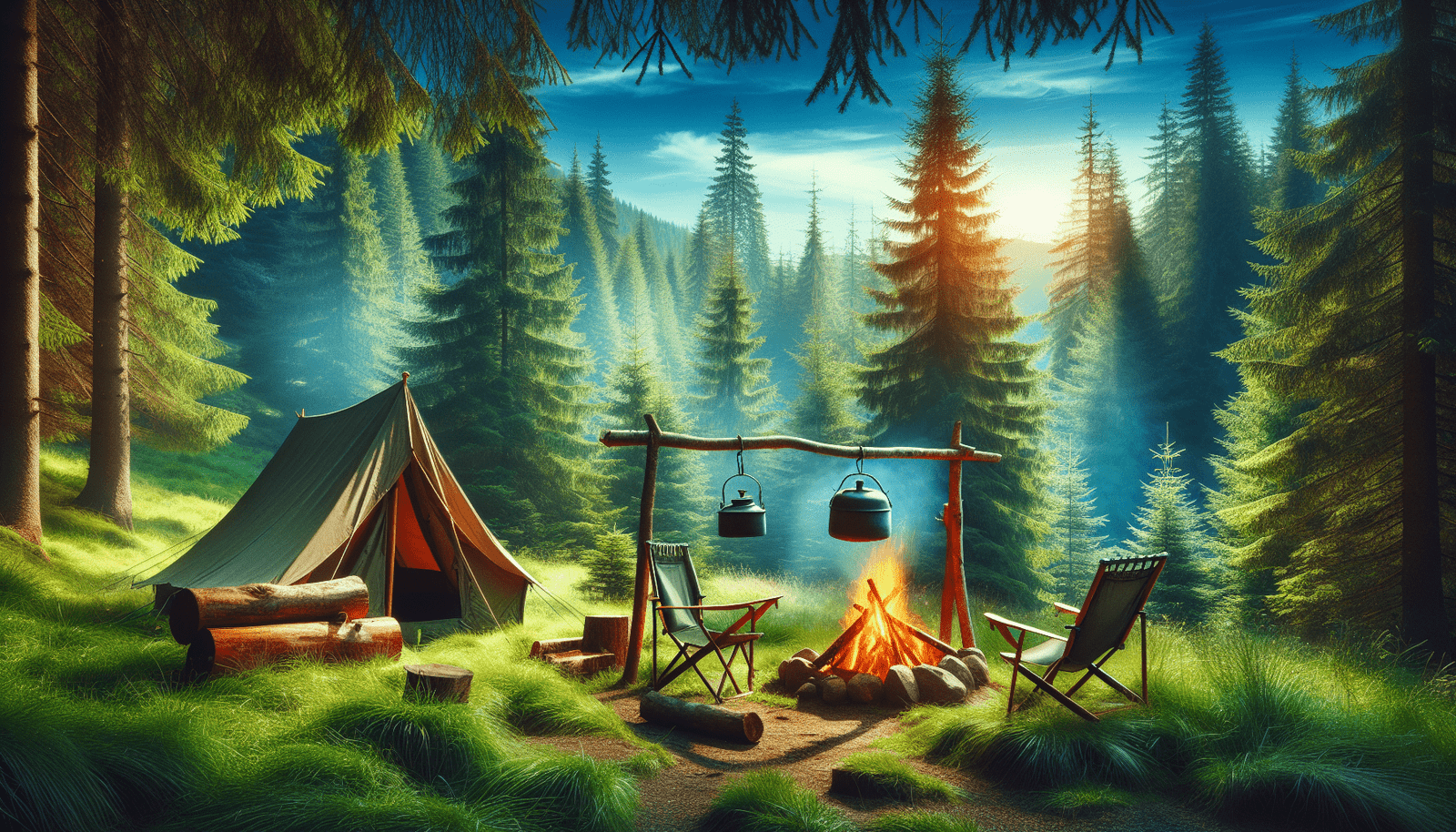In “What Does A Camp Consist Of?” you’ll discover the essential elements that make a camping trip unforgettable. From the basic gear you’ll need to the little touches that bring comfort and joy, this guide covers it all. You’ll learn about setting up the perfect campsite, preparing delicious campfire meals, and engaging in fun activities that bring everyone together. Whether you’re a seasoned camper or planning your first outing, this article will provide you with everything you need to create lasting memories in the great outdoors.
What Does A Camp Consist Of?
Have you ever wondered, “What does a camp consist of?” Maybe you’re planning your first camping trip, or perhaps you’re reminiscing about fond memories from childhood summer camps. Regardless of your experience level, understanding what constitutes a camp can make your adventures more enjoyable and hassle-free.

Understanding the Basics of Camping
Camping is an outdoor activity involving overnight stays away from home in a shelter, such as a tent, a caravan, or a motorhome. Engaging in this activity allows you to immerse yourself in nature, unplug from the digital world, and create lasting memories. But to thoroughly enjoy your camping experience, it’s essential to know what you need and what to expect.
Types of Camps
Camps come in various types, offering different levels of comfort and activities. Here’s a breakdown:
| Type of Camp | Description |
|---|---|
| Tent Camps | These are the most traditional types and involve setting up a tent as your sleeping quarters. Ideal for hiking trips and remote locations. |
| Caravan or RV Camps | For those who enjoy a bit more comfort, RVs provide amenities like a kitchen, bathroom, and sleeping areas. |
| Glamping | A blend of “glamorous” and “camping,” glamping involves luxurious accommodations, such as high-end tents, yurts, or treehouses. |
| Backcountry Camps | These camps are located in remote, often unmarked areas. You must hike to reach them, and they offer the most primitive camping experiences. |
| Summer Camps | Organized camps for children and teenagers, offering a range of activities and lasting from a few days to several weeks. |
Understanding the type of camp you’re going to can help you tailor your preparation and packing, ensuring that you have everything you need for an enjoyable experience.
Essential Components of a Camp
So, what does a camp consist of? While the specifics can vary depending on the type of camp, some essentials are universal.
Shelter
The most critical component, obviously, is your shelter. This could be a tent, an RV, or a luxury yurt. Here’s a closer look:
Tents
Tents are the backbone of traditional camping. When selecting a tent, consider:
- Size: Choose one that comfortably accommodates the number of people.
- Season: Opt for a 3-season tent for typical camping or a 4-season tent for harsher climates.
- Ease of Setup: Instant tents are great for beginners.
RVs and Caravans
For those who prefer not to rough it completely, RVs and caravans offer a home away from home:
- Compact Units: These are more comfortable to drive and park.
- Amenities: Look for units with essential amenities like a kitchenette, bathroom, and heating/cooling systems.
- Fuel Efficiency: Some modern caravans are designed to be more fuel-efficient, saving you money on long trips.
Other Shelter Options
Glamping sites offer a wide variety of luxurious shelters like treehouses, yurts, and safari tents. They often come pre-set, relieving you of the setup burden.
Sleeping Gear
After shelter, sleeping gear is crucial for a good night’s rest under the stars. Here are some options:
- Sleeping Bags: Choose according to the season and temperature rating.
- Sleeping Pads: These provide insulation and cushioning from the ground.
- Air Mattresses: For those looking for more comfort, air mattresses can make a difference.
Cooking Equipment
Feeding yourself in the wilderness requires some planning. Essential cooking equipment includes:
- Portable Stoves: Small, lightweight stoves are easy to carry and set up.
- Fuel: Always carry extra fuel.
- Utensils: Pots, pans, plates, cups, and cutting tools.
- Cooler: Keeps your food fresh and can double as a storage container.
Food and Water
Always pack more food and water than you think you’ll need. Consider the following:
- Non-Perishables: Canned goods, pasta, and rice.
- Snacks: Granola bars, nuts, and dried fruits.
- Water Filter: Handy if you’ll be camping near water sources.
Clothing
Pack clothing suitable for the weather and layered dressing:
- Base Layer: Moisture-wicking materials.
- Mid Layer: Insulating fabrics like fleece.
- Outer Layer: Water-resistant and windproof.
- Footwear: Sturdy hiking boots or shoes.
First Aid Kit
A well-stocked first aid kit is indispensable. It should include:
- Band-aids
- Antiseptic wipes
- Gauze and bandages
- Pain relievers
- Tweezers
- Scissors
Tools and Gadgets
You never know when your campsite setup or planning might need some extra help. Consider carrying:
- Multi-tool: Pocket knives and multi-tools are practical for various tasks.
- Flashlight/Lantern: Always have extra batteries.
- Map and Compass: GPS devices can fail, so carry analog backups.
- Firestarters: Waterproof matches or a fire-starting kit.
Bathroom Essentials
For a seamless experience, especially in natural settings without amenities:
- Portable Toilet: Consider if you’re camping far from facilities.
- Biodegradable Soap: Good for maintaining natural surroundings.
- Toilet Paper: Always carry extra.
Entertainment
Don’t forget to pack some sources of entertainment:
- Books: Lightweight and easy to carry.
- Board Games: Compact travel versions are great for groups.
- Outdoor Equipment: Frisbees, balls, and other sports gear.
Safety and Communication
Safety first! Always prepare for emergency situations:
- Emergency Whistle: Useful for signaling.
- First Aid Manual: Helps in tricky situations.
- Satellite Phone: Handy for remote areas.
Understanding Camp Etiquette
Camping is not just about enjoying yourself; it also involves respecting others and nature. Here are some general guidelines:
Leave No Trace
Always leave your campsite cleaner than you found it. This includes:
- Picking up litter
- Burying human waste
- Not disturbing wildlife or plants
Noise Control
Keep noise levels down, especially during nighttime hours. Your fellow campers will appreciate it.
Fire Safety
Make sure your fire is completely extinguished before leaving your campsite. Use designated fire rings if available.
Respect Boundaries
Observe the campgrounds’ relevant rules and respect other campers’ space.
Activities to Enjoy at a Camp
Camping is not just about sitting around a fire; a wealth of activities await:
Hiking and Walking
Explore nearby trails to enjoy nature and get some exercise.
Fishing
Great for both relaxation and providing your dinner. Make sure to check local regulations.
Stargazing
Camping offers a fantastic opportunity to enjoy the night sky away from city lights. Consider bringing a telescope or some star charts.
Swimming
Lakes and rivers can offer refreshing breaks, but always ensure your swimming spots are safe.
Games and Sports
Activities like Frisbee, soccer, or even a simple deck of cards can provide hours of fun.
Photography
The great outdoors offer endless opportunities for stunning photos. Capture landscapes, wildlife, and those magical campfire moments.

Conclusion
Understanding what a camp consists of is fundamental to having an enjoyable and safe experience. Whether you’re heading out for a weekend in the woods or planning a luxurious glamping getaway, being prepared is the key to making wonderful memories. From shelter and sleeping gear to cooking equipment and entertainment, the essentials of a camp remain consistent across different camping types. Remember to respect nature, follow camp etiquette, and most importantly, have fun. Now that you’re equipped with all this knowledge, why wait? Your next adventure awaits!
